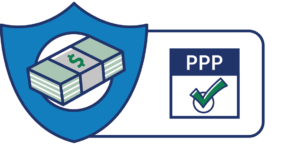May 27, 2020
On March 27th, President Trump signed HR 748, commonly known as the CARES Act, into law. This bill is the largest economic stimulus in history, allocating $2.2 trillion towards mitigating the health, safety, and economic effects of the coronavirus. The CARES Act dedicated $350 billion to support small businesses through an expanded Economic Injury Disaster Loan and the new Payment Protect Program (PPP), which was designed to keep workers employed amid the pandemic and economic shutdown. The response to these programs was overwhelming and within ten days of becoming available, the funds were depleted. By mid-April, the Senate passed an additional $484 billion federal relief package dedicated to reviving these loan programs, in addition to providing additional funds for hospitals.
Protect Program (PPP), which was designed to keep workers employed amid the pandemic and economic shutdown. The response to these programs was overwhelming and within ten days of becoming available, the funds were depleted. By mid-April, the Senate passed an additional $484 billion federal relief package dedicated to reviving these loan programs, in addition to providing additional funds for hospitals.
Guidelines required businesses to spend the money within eight weeks of its receipt and 75% on the funds they received on payroll in order to be forgiven. Last week, the SBA released official guidance on PPP loan forgiveness provisions. To have the loan converted to a grant, the lender that processed the business’s PPP loan must submit the 11-page application on behalf of borrowers (businesses). The US Chamber published this helpful guide to calculate how much of the loan will be forgiven. Loan amounts not forgiven will be converted into a two-year loan at 1% interest. Additional changes may be coming to the PPP effort, including adjustments to how the money can be spent and the timelines for eligible expenses. This effort seems to have support from Treasury Secretary Mnuchin and was voted on in the House today as the Paycheck Protection Flexibility Act passing on a vote of 417-1. It will now go to the Senate. This bill makes the following changes to the Paycheck Protection Program:
- Extends the loan term from 8 weeks to 24 weeks;
- Lowers the percentage of loan proceeds that must be used on payroll from 75% to 60%; and
- Extends the PPP from June 30 to Dec. 31, 2020.